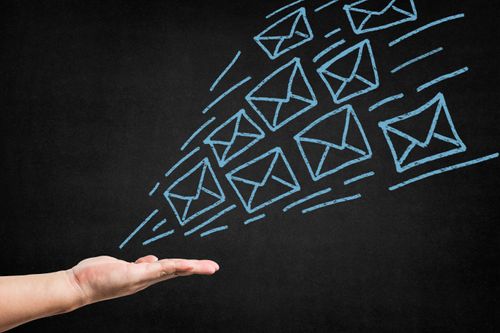Verification emails are an essential part of any online business. They are used to confirm a user's email address, validate their account, and ensure that they are who they say they are. Verification emails are crucial for security reasons, as they help prevent fraud and protect user data. They also help businesses build trust with their customers and improve their overall user experience.
In this article, we will discuss the best practices for creating effective verification emails and provide you with some examples to help you get started.
Best Practices for Verification Emails

When creating verification emails, there are several best practices that you should follow to ensure that they are effective and efficient. These best practices include:
1. Keep it Simple
Verification emails should be simple and easy to understand. They should clearly state the purpose of the email and provide clear instructions on what the user needs to do next. Avoid using technical jargon or complicated language that may confuse the user.
2. Use a Clear Subject Line
The subject line of your verification email should be clear and concise. It should clearly state the purpose of the email and include the word ""verification"" or ""confirmation."" This will help the user identify the email and ensure that it is not mistaken for spam.
3. Provide Clear Instructions
Your verification email should provide clear instructions on what the user needs to do next. This may include clicking on a link, entering a code, or completing a form. Make sure that the instructions are easy to follow and that the user knows what to expect.
4. Use a Call-to-Action Button
Include a call-to-action button in your verification email to make it easy for the user to complete the verification process. The button should be prominently displayed and clearly labeled, such as ""Verify My Account"" or ""Confirm My Email Address.""
5. Personalize the Email
Personalize your verification email by addressing the user by name and using their email address in the body of the email. This will help the user feel more connected to your business and improve their overall experience.
6. Use a Professional Email Address
Use a professional email address to send your verification emails. This will help improve the credibility of your business and ensure that the email is not mistaken for spam.
Effective Verification Email Examples

Now that you know the best practices for creating verification emails, let's take a look at some effective examples:
1. Welcome Email
The welcome email is the first email that a user receives after signing up for your service. It should welcome the user to your business and provide them with clear instructions on how to verify their account. Here is an example:
Subject Line: Welcome to [Business Name] - Please Verify Your Account
Dear [User Name],
Thank you for signing up for [Business Name]. To complete your registration, please click on the link below to verify your account:
[Verification Link]
If you have any questions or need assistance, please contact our support team at [Support Email Address].
Thank you,
[Business Name] Team
2. Account Verification Email
The account verification email is sent to the user after they have completed the registration process. It should provide clear instructions on how to verify their account and what to expect next. Here is an example:
Subject Line: Verify Your [Business Name] Account
Dear [User Name],
Thank you for registering with [Business Name]. To verify your account, please click on the link below:
[Verification Link]
Once you have verified your account, you will be able to access all of the features and services that [Business Name] has to offer.
If you have any questions or need assistance, please contact our support team at [Support Email Address].
Thank you,
[Business Name] Team
3. Password Reset Email
The password reset email is sent to the user when they request to reset their password. It should provide clear instructions on how to reset their password and what to expect next. Here is an example:
Subject Line: Reset Your [Business Name] Password
Dear [User Name],
We have received a request to reset your password for your [Business Name] account. To reset your password, please click on the link below:
[Password Reset Link]
If you did not request to reset your password, please ignore this email.
If you have any questions or need assistance, please contact our support team at [Support Email Address].
Thank you,
[Business Name] Team
Conclusion
Verification emails are an essential part of any online business. They help prevent fraud, protect user data, and improve the overall user experience. By following the best practices outlined in this article and using the effective examples provided, you can create verification emails that are both efficient and effective.
FAQs
What is a verification email?
A verification email is an email that is sent to a user to confirm their email address, validate their account, and ensure that they are who they say they are.
Why are verification emails important?
Verification emails are important for security reasons, as they help prevent fraud and protect user data. They also help businesses build trust with their customers and improve their overall user experience.
What should be included in a verification email?
A verification email should include a clear subject line, clear instructions on what the user needs to do next, a call-to-action button, and a professional email address. It should also be personalized and easy to understand.



